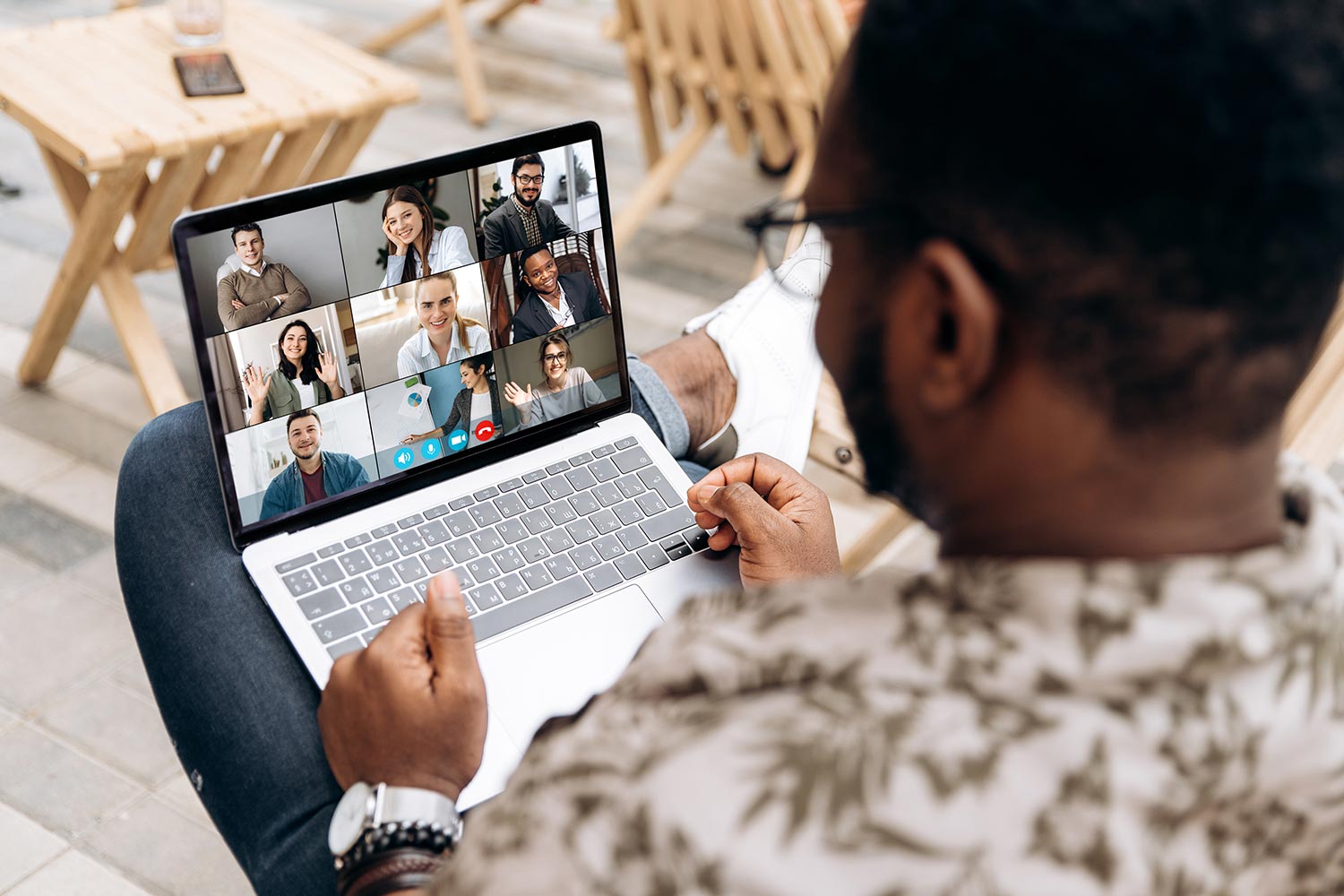Resiliency in the New Normal: Nonprofit Colleagues Share Their Experiences
When it comes to COVID-19, what is that new normal and exactly how are our colleagues adapting? Nonprofit leaders share their experiences.

How are nonprofits adapting to the “new normal” of the pandemic?
When the first shelter-in-place orders were imposed, most nonprofit organizations paused to rethink their fundraising efforts. Galas moved to the virtual world. In-person meetings with major donors became video calls. Appeals were rewritten to reference how agencies were responding to serve clients impacted by the crisis. As weeks and months passed, development departments had to adapt their fundraising strategies to the “new normal.”
But what is that new normal and exactly how are our colleagues adapting? We wanted to find out, so we conducted an informal survey of senior-level development professionals, the majority of whom work at San Francisco Bay Area nonprofits. We crafted five key questions to shed light on how our peers are navigating these unpredictable times. Along with our own experiences, this article presents the commonly held, and occasionally rare, insights, questions, and lessons learned.
Question 1. What has been the biggest surprise or lesson you have learned during this crisis?
The number one response was the explosion of generosity, both solicited and unsolicited, from donors. This outpouring of support will result in several of the representative organizations having record-breaking fundraising years. A stunning example comes from the San Francisco/Marin Food Bank which, early in the crisis, raised more than $10M in less than two months.
Perhaps Quincy Dare, Development Assistant of the Women’s Building, summarized this outpouring best in saying, “Despite people facing hard and stressful times, they are still showing great generosity and solidarity with their community. It’s heartening to see that even in difficult times, people still want to help.”
Unfortunately, the fundraising success at her organization and others stands in stark contrast to the experiences of too many nonprofits struggling yet to survive.
How staff has adapted to the continuing coronavirus crisis was the second most-cited response. Respondents frequently commented on the resiliency, agility, and creativity of both their colleagues and the entire agency. “I’m heartened by how adept so many people in the organization as a whole, and the development team in particular, have been in pivoting swiftly and successfully to adopt new methods of doing work and optimizing the best technology,” said Katherine Bella, Chief Strategy Officer at Positive Resource Center.
Charlie Meade, Chief Development Officer, Shanti Project, commented that each of us responds differently in a crisis. The biggest lesson he has learned, he says, is to “meet people, donors and coworkers included, where they are at.” He’s observed that some coworkers made the transition to working from home “without a hiccup” while others have found it “very unsettling and disruptive.”
Not surprisingly, a supportive work environment can make a difference, as recognized by Katrin Ciaffa, Regional Director at 10,000 Degrees, Sonoma County. “Leadership is essential,” she says, “in helping teams stay connected, modeling both hope and vulnerability, acknowledging what we’re all going through, and allowing flexibility, not just in schedules but in what we offer our staff.”
Ciaffa goes on to note that her organization provides staff with work breaks, like virtual yoga classes facilitated by a staff member, and encourages informal coffee breaks among colleagues via video conferencing.
Question 2. What do you anticipate needing most in the coming weeks/months (besides donations)?
This question elicited a common response from several of our survey participants. Development professionals view this health crisis as an opportunity for boards and staff to grow in their understanding of and commitment to fundraising.
Bella summarized her anticipated need as “a heightened organizational commitment to the culture of philanthropy and each board and staff member’s understanding that we’re all in this together.”
Her thinking was echoed by Tom Coughlan, currently interim Co-Chief Executive Officer at Hanna Boys Center, who said, “A board and senior leadership that really understand fundraising, both for setting realistic expectations and in how they can help raise more money.”
Tracey Broadhead Frith, Capital Campaign Director, Bishop O’Dowd High School, was even more succinct in saying, “Patience. Creativity. Transparency.”
Another theme that emerged from responses to this question is the desire to maintain whatever momentum organizations have been able to achieve during this tumultuous time. Coughlan commented, “The crisis has also served as a catalyst to check in with our donors. We had an extraordinary uptick in our personal contacts with donors via phone/Zoom/email, which was well received. We need to maintain this momentum in the coming year(s) to win back and maintain our major gifts.”
Keeping donors and the community informed and engaged is both a challenge and a goal, especially with no clear end date in sight for this crisis.
Question 3. What tips have you found effective for working successfully in development teams?
Several of the development directors who responded had advised their teams to change their meeting schedules and structure to accommodate remote working. Some organizations alternated between meeting on the phone and by video conferencing—and also began meeting more often for shorter periods of time.
Allyson Halpern, Advancement Director at 826 Valencia Street, explained her new practice. “We have taken our twice a month, hour-long team meetings down to 40 minutes weekly,” she said. “We always start with an icebreaker, sometimes shelter-in-place related: What habit have you developed that you would like to keep? What is the first thing you would do if all restrictions lifted? Make a new Zoom background and talk about it!” And, she said, they meet in total transparency. “We keep our cameras on for this, even if it’s awkward or we are messy.”
Meade also increased the meeting schedule at Shanti. “We are meeting more often on Zoom, and the meetings have become a mix of personal check-in and work projects,” he said. His organization has also seen the benefits of this approach. “Meeting twice a week has been effective, and we have stayed connected, which is so important during this time when the world is upside down.”
One development director said she used the breakout room function in Zoom to allow for smaller group conversations focused on a specific topic.
Question 4. What isn’t or hasn’t been successful?
One director reported that her staff members’ lives had become more complicated due to at-home challenges.
Two directors commented on the negative effect that constant Zoom calls have had on their team members. A common refrain, as expressed by Ciaffa is that “long Zoom meetings—meeting after meeting—are really more exhausting than in-person meetings!” She observed that sometimes picking up the phone is better.
Meade expressed some difficulty with staff management. “Sharing workloads is much more suited to in-person interaction and harder to manage when working remotely,” he said. “As the CDO, I am constantly trying to shift and manage workloads so folks can find a balance.”
Another challenge cited by Coughlan concerns backend operations. Sometimes employees miss “being in the office with all of the resources available—printer, copier, mail/stationery,” he said. And that can require “extra planning.”
And finally, Gayle Roberts, Chief Development Officer, at Larkin Street Youth Services, noted the difficulty in completing the actual work of fundraising while sheltering in place. She’s been wondering “how to maintain donor engagements across all markets when you cannot meet in person.”
Question 5. What do you want to know in the coming months?
Our respondents had more questions than answers to this final query. Halpern summed up what she wanted to know in one word: “Everything.”
Others asked more specific questions about how to do their work, plan their budgets, and engage with their donors. For example, Roberts wants to know “when it will be safe to meet, and when will people feel comfortable meeting, again—one on one, in small groups, in large groups—since this will determine a lot of our plans for the next one, two, or more years.”
Dare took the question about safety a step farther, by wondering how organizations could best go about “providing adequate protective equipment and safety procedures for staff and clients.” She added, “It’s important that we are able to continue our essential in-person programs, such as Food Pantry, while still providing a safe environment.”
When these questions cannot be answered, development professionals will have difficulty creating budgets and annual development plans and reforecasting their revenue.
Others wondered about the state of the philanthropic landscape. Meade raised these concerns: “Will we be seeing more folks step up to make smaller donations? Will virtual galas hold people’s interest and be financially successful? What does a year-end campaign look like?”
None of us knows what the future holds for fundraising in the nonprofit community while the Covid-19 crisis holds sway. Based on our informal survey, what we do know is that development professionals are resilient and creative problem-solvers. By sharing information, insights, and inspirations with each other, development professionals—and the rest of the profession—will be ready for whatever challenges come their way in the “new normal.”
What are your answers to these questions? Add to the conversation in the comments below.
You might also like:
- When the Board Becomes the Problem: Reclaiming Power in Nonprofit Leadership
- Why Human-Centered AI Adoption Matters for Nonprofits
- The New Sheriff in Town: Tips for Successfully Leading a Nonprofit Team (that Someone Else Built)
- When the System Fails Quietly: What I’ve Learned from Sitting Between the Frontline and the Data
- A Board Member “Contract”
You made it to the end! Please share this article!
Let’s help other nonprofit leaders succeed! Consider sharing this article with your friends and colleagues via email or social media.
About the Author
Articles on Blue Avocado do not provide legal representation or legal advice and should not be used as a substitute for advice or legal counsel. Blue Avocado provides space for the nonprofit sector to express new ideas. The opinions and views expressed in this article are solely those of the authors. They do not purport to reflect or imply the opinions or views of Blue Avocado, its publisher, or affiliated organizations. Blue Avocado, its publisher, and affiliated organizations are not liable for website visitors’ use of the content on Blue Avocado nor for visitors’ decisions about using the Blue Avocado website.









The biggest -welcome – surprise for me has been how much closer our staff members have become to each other. They’ve set up more ways to connect, to support each other, and to help each other solve bigger issues. They reach across departments, continuing to knock down the silos that had been apart of our agency’s structure. It has been a true blessing for our agency.
Greetings to both of you! Well observed and presented. One question, though: did you get any responses from arts presenting organizations?